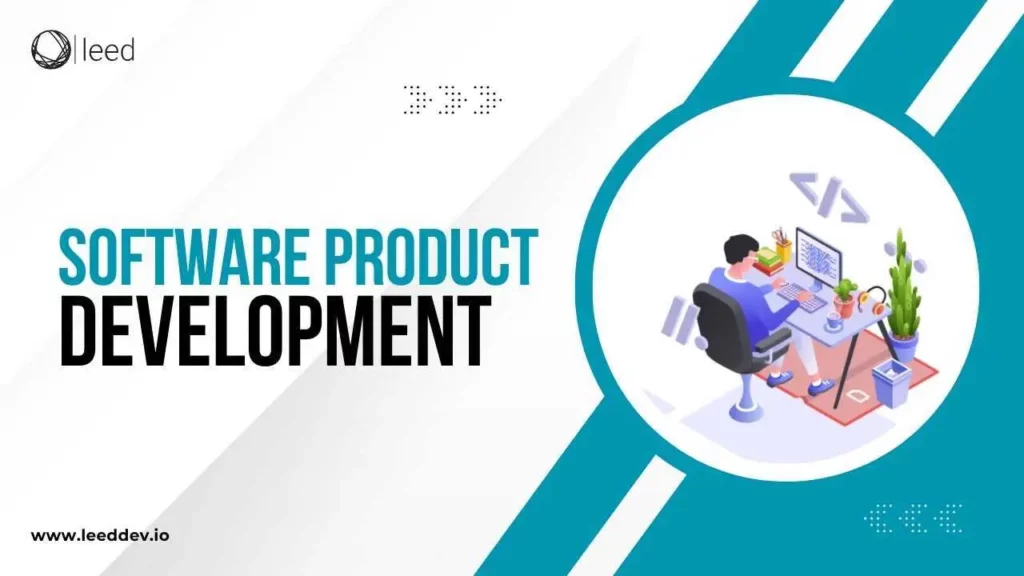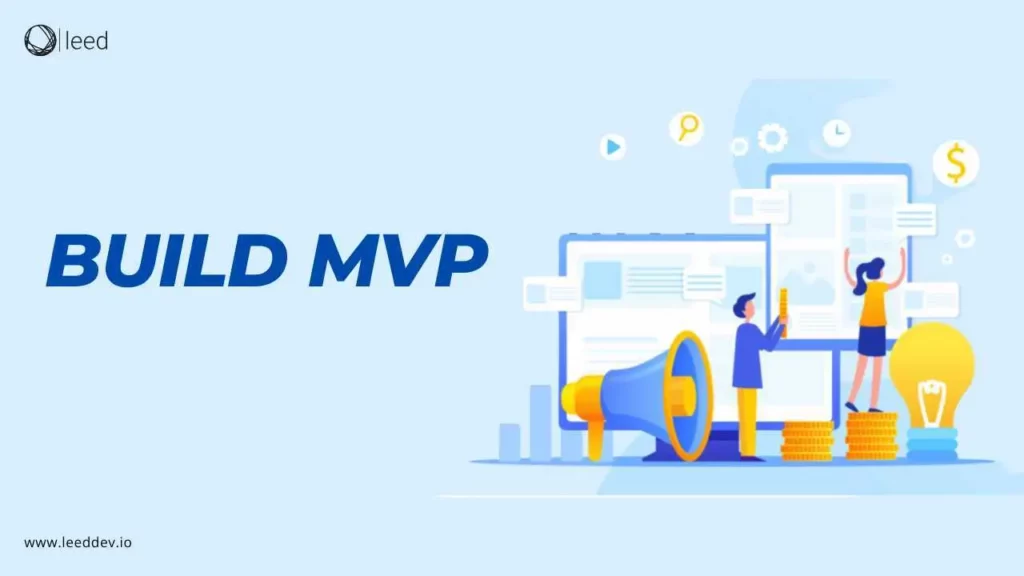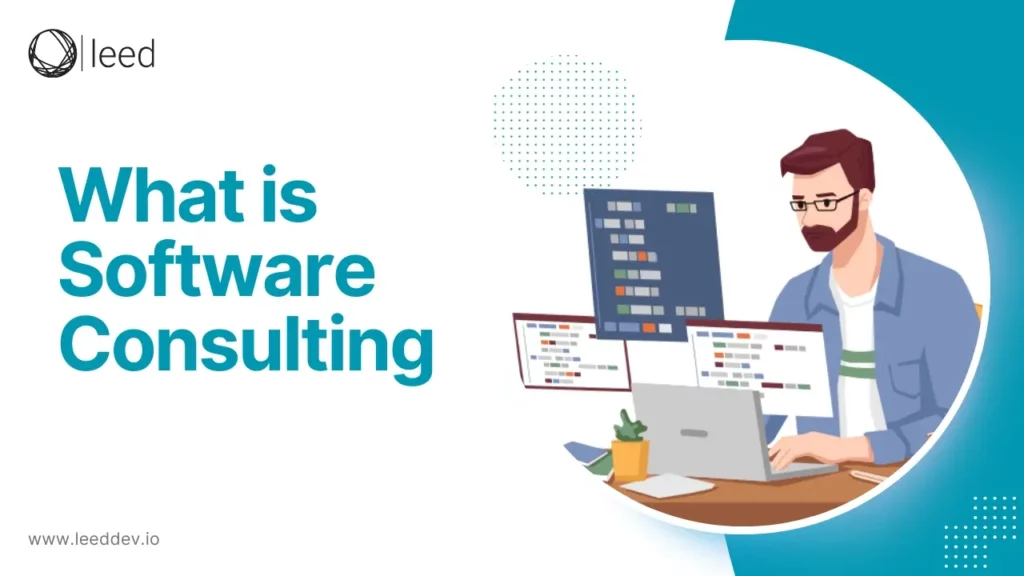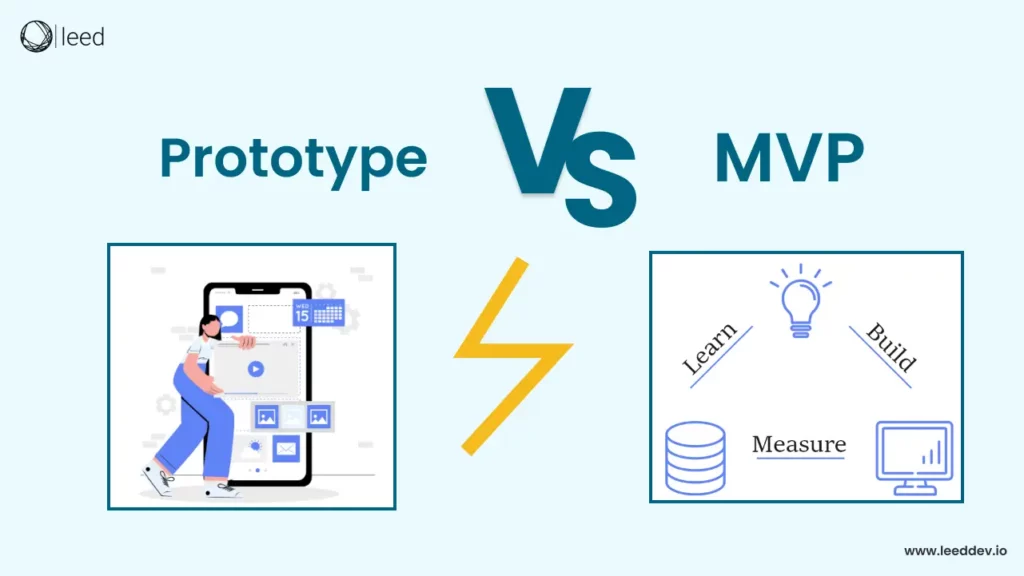The field of software product development has evolved, with businesses adopting new methodologies to bring ideas to life. By following structured approaches companies can ensure their products meet dynamic user needs while adapting to market trends.
Software product market is valued at $1.6 trillion in 2024 with projections reaching $2.5 trillion by 2028. For businesses this means high growth opportunities if they adopt effective development processes.
This guide covers the development stages, best practices, and methodologies needed to create winning software products. Let’s dive in!
What is Software Product Development?
Software product development is the process of creating or improving a software product with added features and value. This can involve developing a new product, enhancing an existing one, or upgrading development methods. By introducing innovative features, these products can improve market standards and enhance customer experiences.
Beyond technical work, software product development includes crucial non-technical activities like market research, product planning, and customer support. This focus on a holistic product approach increases the likelihood of market success by aligning the product with customer needs and industry demands.
7 Stages of Software Product Development
The stages of Software Product Development are given below.
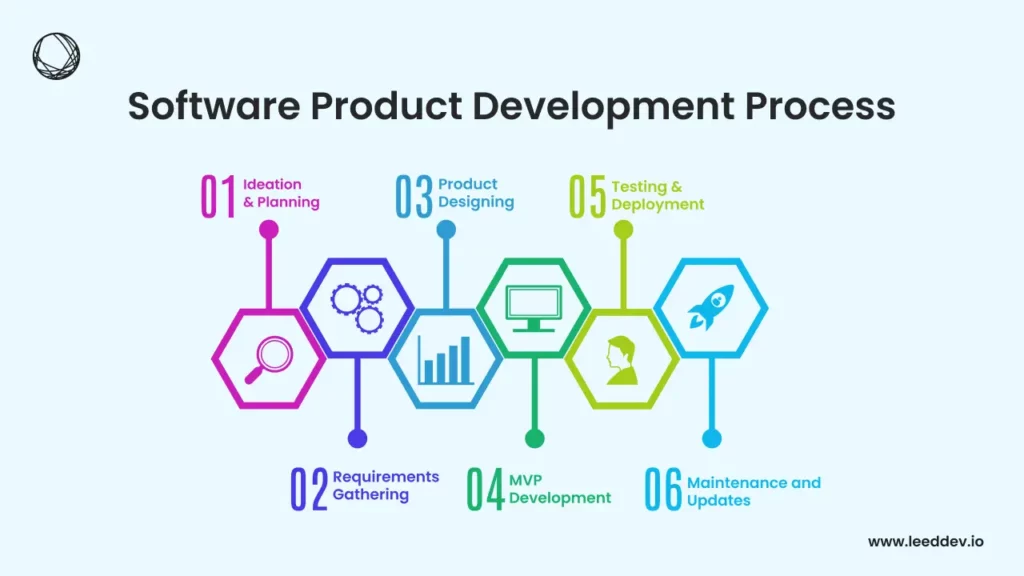
Ideation & Planning
Ideation and planning are essential steps for developing a successful software product. Every great product starts with an idea, but its strength lies in careful evaluation. SWOT analysis further helps identify internal strengths and weaknesses and external market opportunities and threats.
Validating your idea is crucial to avoid building a product with no market need which is one of the top reasons startups fail. The product discovery phase helps validate your idea and involves market research, competitive analysis, user research, and testing. This phase ensures your product meets user needs and positions it effectively in the market.
Gathering Requirements
Once market research is complete, planning shifts to building the product. Development teams must understand project goals and assess feasibility. Key requirements include:
✔ Functional Requirements: Define system behavior, inputs, and outputs.
✔ Non-Functional Requirements: Address qualities like performance and scalability.
✔ User Requirements: Specify user roles, interfaces, and customization.
✔ System Requirements: Outline hardware, software, and infrastructure needs.
✔ Business Requirements: Capture project-driving objectives.
✔ Testing Requirements: Outline testing types for meeting system criteria.
✔ Acceptance Criteria: Define conditions for stakeholder approval.
✔ Risk Assessment: Address potential risks and mitigation plans.
This structured approach ensures clarity, feasibility, and alignment with user needs throughout the development process
Product Design
During the design phase system architects create a high-level system design based on gathered requirements. Stakeholders engage in discussions to address technical issues and decide on the project’s technologies, constraints, timelines and budget. Ultimately, they select a design solution that aligns with their needs.
The approved design guides the development of software components, outlines functional characteristics and specifies database usage. This design is documented in a Design Specification Document (DSD). To facilitate understanding, various notations like block diagrams, ER diagrams, UML diagrams and layouts such as website prototypes are utilized. Basically in the Product Design phase the overall design of the software product is established.
MVP Development
Minimum Viable Product represents simplest version of a product that can be launched to the market while still delivering value to users. It includes only the essential features necessary to solve the core problem or meet the primary needs of the target audience.
To effectively launch an MVP, it’s crucial to follow the LEAN development approach. This methodology emphasizes maximizing value delivery to customers, minimizing waste, and optimizing resource use throughout the development process.
Testing
During the testing phase Quality Assurance engineers identify bugs by comparing the software’s performance against the defined requirements. If defects are found, testers create bug reports for developers to fix, and the testing process is repeated to ensure that fixes do not introduce new issues.
Effective testing typically involves a combination of manual and automated methods, using various frameworks and continuous integration for high-quality results.
Deployment
During the deployment stage, software moves into production, and teams typically release it in phases, especially for complex projects. This approach allows for gradual updates and feature additions based on user analytics and feedback.
Initially, features can be rolled out to a limited user group to ensure satisfaction and functionality before expanding access to a broader audience. Use tools like Jenkins, Travis CI, or GitLab CI/CD to streamline the process. Also release changes in small batches rather than large updates to reduce risk.
Maintenance & Updates
The maintenance stage is the final phase of the software product development process, commencing once the project is successfully implemented in the end-user environment. This phase focuses on providing ongoing support, enhancing functionality, and implementing necessary updates to keep the software operational and secure.
Software Product Development Process vs Software Product Development Lifecycle
| Aspects | Software Product Development Process | Software Development Lifecycle (SDLC) |
| Goal | Create a marketable product that meets customer needs | Develop and deliver software based on specific functional requirements |
| Scope | Includes non-technical elements like market research and customer feedback | Focuses on technical development stages from design to deployment |
| Customer Focus | High emphasis on customer experience and satisfaction | Emphasis on meeting functional and technical requirements |
| End Result | A fully market-ready product | A working software solution |
| Iteration | Often involves continuous feedback and iterative releases | Iterative or waterfall approach depending on the methodology chosen |
Software Product Development Methodologies
Here are the five most common software development methodologies, along with their advantages and disadvantages:
Waterfall Model
Waterfall model is the earliest software development approach characterized by a linear sequence of steps. Basically includes conception, initiation, design, construction, testing, implementation & maintenance. Each step must be completed before moving to the next and there is no overlap between phases.
Key Features
- Linear Process: Steps are followed consecutively without overlap.
- Clear Requirements: Best suited for projects with well-defined and stable requirements.
- Predictability: Ideal for projects with fixed budgets and schedules, such as legacy systems and maintenance tasks.
Advantages
- Logical and transparent structure.
- Easier to manage due to defined phases and milestones.
Disadvantages
- Inflexible to changes; difficult to accommodate new user feedback or requirements once a phase is completed.
- Not suitable for projects where requirements may evolve.
In summary, while the Waterfall model offers a structured approach, its rigidity makes it less adaptable for projects requiring flexibility in response to user feedback or changing needs.
Agile Methodology
Agile is an iterative approach to software development that emphasizes continuous releases & integration of customer feedback. It improves development speed & allows teams to respond swiftly to market changes.
Key Features
- Iterative Development: Software is developed in small incremental cycles allowing for frequent updates and improvements
- Customer Feedback: Regular feedback is incorporated at each stage ensuring the product evolves to meet user needs
- Flexibility: Agile accommodates changes and new features easily as the development process is adaptive
Advantages
- Increased Speed: Faster development cycles and quicker release of features.
- Higher Satisfaction: 93% of organizations using Agile report improved customer satisfaction.
- Better Engagement: Agile promotes greater employee engagement and collaboration.
- Enhanced Quality: Each release undergoes rigorous testing to maintain high software quality.
Disadvantages
- Less Predictability: Due to its iterative nature, project timelines and budgets can become less predictable
- Scope Creep: Flexibility to make changes may lead to uncontrolled changes or expansions in project scope
Scrum
Scrum is the most widely adopted practical application of Agile principles used by 81% of Agile teams. It’s a structured framework that builds on Agile core principles by adding specific roles, rules and events to help teams deliver value iteratively.
Key Features
- Sprint Cycles: Work is divided into short, focused sprints of 2-4 weeks, during which specific goals are achieved, and the product is designed, developed and tested
- Incremental Value Delivery: Each sprint produces a functional product increment, allowing for continuous improvement based on feedback
- Defined Roles: Scrum teams include defined roles like Product Owner, Scrum Master, and Development Team, each with specific responsibilities to enhance clarity and efficiency
Advantages
- Enhanced Productivity: Short sprints maintain team focus and deliver value quickly
- Flexibility with Structure: While aligned with Agile, Scrum’s rules and roles bring structure, reducing ambiguity
- Continuous Feedback: Regular sprint reviews and retrospectives allow for immediate feedback and ongoing improvement
Disadvantages
- Rigidity in Structure: Scrum’s roles and events can feel restrictive, especially for smaller or less experienced teams
- Dependency on Team Skill: Success heavily relies on skilled team members who understand Scrum’s rules and processes
- Potential for Sprint Pressure: The fast-paced nature of sprints may lead to stress or “sprint burnout” if not managed carefully
Kanban
Kanban is a visual project management method which is ideal for improving workflow efficiency & enhancing productivity in various industries.
Key Features
- Kanban Board: Work items are represented visually on a board divided into stages like To Do, In Progress and Done allowing teams to easily track status of tasks
- Work-in-Progress (WIP) Limits: Limits the number of tasks in each stage to avoid overload and ensure smooth flow
- Continuous Delivery: Tasks are delivered as soon as completed, without waiting for a set release cycle
- Pull System: Team members pull tasks based on capacity contrasting with traditional push systems
Advantages
- Visual Management: Clear representation of workflows for easy tracking
- Flexible and Adaptive: Can easily adjust to changing priorities
- Reduced Waste: Limits unnecessary tasks by focusing on active work
- Continuous Delivery: Regular task completion ensures steady progress
Disadvantages
- Limited Structure: Lacks defined phases, which may be challenging for complex projects
- Short-Term Focus: Less emphasis on long-term planning
- Requires Discipline: Success depends on team discipline and communication
Need Any Help building Your Software Product?
Got an innovative idea but unsure how to bring it to life? As the best software product development company Leed Software Development is here to turn your vision into reality. With our expertise across the entire software development lifecycle we’re equipped to guide you from discovery to successful launch.
At Leed Software Development we don’t just build software we build partnerships that drive business success. Let’s create something amazing together. We offer exceptional software product development services that exceed your expectations. Reach out to our team today to discuss your project!
FAQs
What is software product development?
It’s the process of creating, enhancing, or upgrading software products with new features and value, from concept through to deployment. It involves technical development and non-technical aspects like market research and customer support.
What are the key stages of software product development?
The main stages include Ideation & Planning, Gathering Requirements, Product Design, MVP Development, Testing, Deployment, and Maintenance & Updates.
How does software product development differ from SDLC?
While SDLC focuses on the technical stages (design to deployment), software product development encompasses the entire process, including market research, customer feedback, and product-market alignment.
What is an MVP, and why is it important?
An MVP (Minimum Viable Product) is a simplified version of a product with core features, allowing businesses to test the concept in the market with minimal investment.
What methodologies are commonly used in software product development?
Common methodologies include Waterfall, Agile, Scrum, and Kanban. Each has unique strengths, from Agile’s adaptability to Kanban’s visual workflow management.
Why is Agile preferred for modern software development?
Agile allows for iterative development, frequent updates, and customer feedback integration, enabling faster development and more flexibility to adapt to market changes.
How can Leed Software Development help me with my software product?
Leed Software Development offers end-to-end services, from ideation to launch, including custom software development, MVP creation, quality assurance, and more. We’re dedicated to helping bring your vision to life. Reach out to discuss your project!

